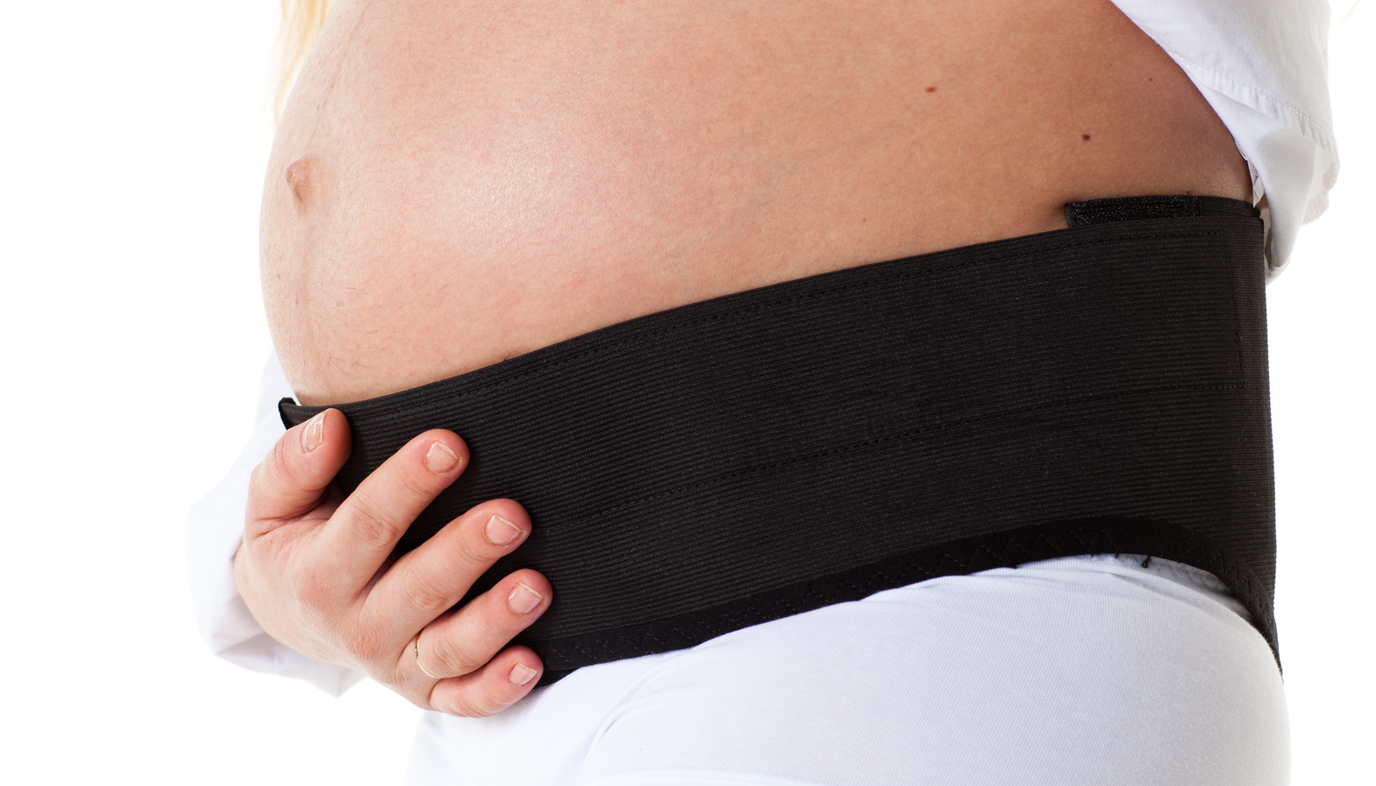
As a woman progresses through her pregnancy, she may experience a loosening in her pelvic joints. This is the body's way of naturally preparing the body for childbirth and the passage of a baby through the birth canal.
The pelvis is a circular bone located about six inches below the navel. The left and right sides of the bone do not connect but do have ligaments and cartilage closing the gap. The area of this connection is called the symphysis pubis -- an important component that allows the pelvis to move freely with a good range of motion.
The Function of a Flexible Pelvis
The symphysis pubis and its counterpart at the back of the pelvis, called the sacroiliac joint, allow the pelvic bones to expand during birth. The pregnancy hormones, relaxin and progesterone, cause the body’s ligaments to gain more flexibility to help make it easier for the baby to travel down the birth canal.

Can the Pelvis Become Too Flexible?
Symphysis pubis can sometimes cause the ligaments to loosen too much and the pelvis to go out of alignment. This is called symphysis pubis dysfunction (SPD). SPD can occur as early as the first 12 weeks of pregnancy, making the pelvis unstable.
If the symphysis pubis tears or severely separates, it is called diastasis symphysis pubis (DSP). This is a rare but painful condition. It is important to note that DSP can happen outside of pregnancy, as well. Sprinting with a sudden change in direction, tripping, falling, swimming the breaststroke or sit-ups are a few activities that can cause DSP.
SPD Symptoms
SPD usually becomes bothersome during the second trimester, if it is going to be a problem. The affected area can spread 2 to 3 mm apart.
Pelvic area pain is the most common symptom and can occur when standing, walking, climbing stairs, getting in or out of the car, or even rolling over in bed. The pain can be burning or sharp and can radiate most anywhere in the lower half of the body including the lower abdomen, groin, perineum, thigh, leg, or back.
Many patients report that the most severe pain is experienced when one leg is lifted at a time or when legs are parted. They also complain about a sensation of freezing in place when they first get out of bed. Sudden sneezing or coughing has also caused pain for many patients.
If the more severe DSP develops, the pain can evolve into the pelvis, groin, hips, and buttocks.

Treatment for SPD
The goal of the treatment plan for SPD is to stabilize the pelvis. There are several options to try after consultation with a qualified physician:
- Rest
- Pelvic support belt
- Core strengthening exercises
- Doing Kegels and pelvic tilts or pelvic floor exercises to strengthen the pelvic muscles
- Sit down to get dressed to keep weight evenly distributed on both legs
- Avoid heavy lifting and pushing
- Sleep with a pillow between the knees
- Keep knees together when rolling over in bed
- Back and abdominal strengthening exercises like the yoga cat stretch
- Build core strength by using a stability ball
- Pain medication, if symptoms are severe and cleared by a physician
A Few Tips
The Cat Stretch:
The yoga cat stretch is done on all fours with the spine and neck aligned. When inhaling, the abdomen is lowered towards the floor with face raised up to the ceiling. When exhaling, the back is rounded toward the ceiling and the head is rolled down and forward to look at the abdomen. Repeat six times.
Kegels are done by tightening the levator ani muscle. The exercise is performed by tightening the muscle in the pelvic area that starts and stops the flow of urine.
Outcome
In extreme cases, a Cesarean section might be scheduled because the pelvis is too unstable to tolerate a vaginal delivery.
Once the baby is born, relaxin production stops and the ligaments return to their normal state, flexible but tightened. The symptoms usually resolve after the delivery, although some patients do continue to have uncomfortable symptoms. A qualified physician will help the patient develop a long-term treatment plan if needed.
